Facetite, a popular minimally invasive procedure, aims to turn back the hands of time and provide patients with a more youthful appearance. In this blog post, we will explore the ins and outs of Facetite, from how it works to the potential benefits and realistic expectations. We’ll delve into the consultation process, pre-procedure instructions, and anesthesia options, ensuring you have all the information you need to make an informed decision. Additionally, we will provide a step-by-step overview of the Facetite procedure and highlight the recovery period, including post-procedure care. Finally, we will discuss the longevity of Facetite results, potential side effects, and offer tips on how to maintain your new look for as long as possible. Whether you’re considering Facetite or simply curious to learn more, this blog post is your guide to understanding and maximizing the benefits of this innovative procedure.
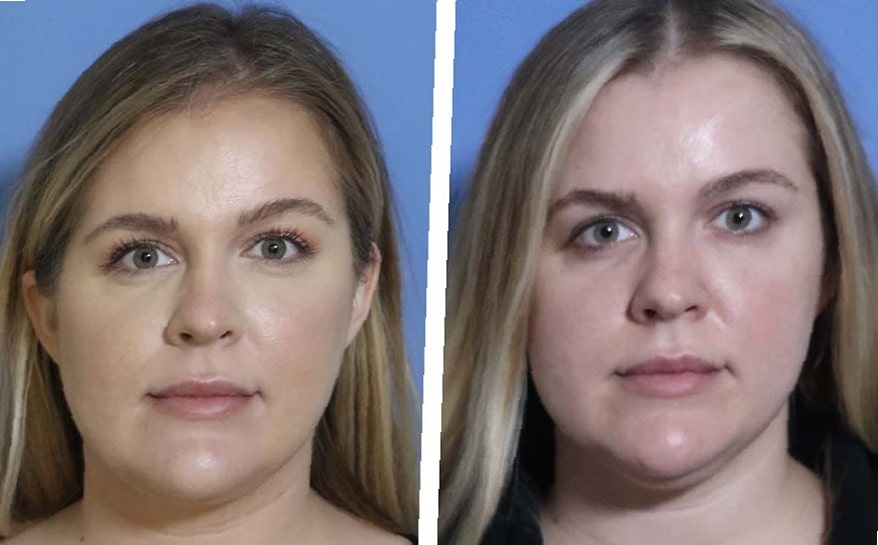
Understanding Facetite: Procedure And Purpose
Facetite is a minimally invasive cosmetic procedure that has gained popularity in recent years. It is designed to provide facial rejuvenation by tightening the skin and restoring a more youthful appearance. The procedure uses radiofrequency energy to target the deeper layers of the skin, stimulating collagen production and tightening the tissues. Facetite is commonly used to address sagging skin, wrinkles, and folds on the lower face and neck.
The Facetite procedure begins with the administration of local anesthesia to ensure patient comfort throughout the process. Once the anesthesia has taken effect, small incisions are made in strategic locations, allowing the surgeon to insert a thin cannula underneath the skin. This cannula delivers radiofrequency energy to the treatment areas, heating the tissues and triggering collagen contraction. The skilled surgeon guides the cannula through the targeted regions, allowing for precise and controlled treatment.
During the Facetite procedure, patients may experience a warming sensation as the radiofrequency energy is delivered. However, discomfort is generally minimal, thanks to the use of local anesthesia. The length of the procedure can vary depending on the extent of the treatment areas, but it typically takes between one to two hours to complete.
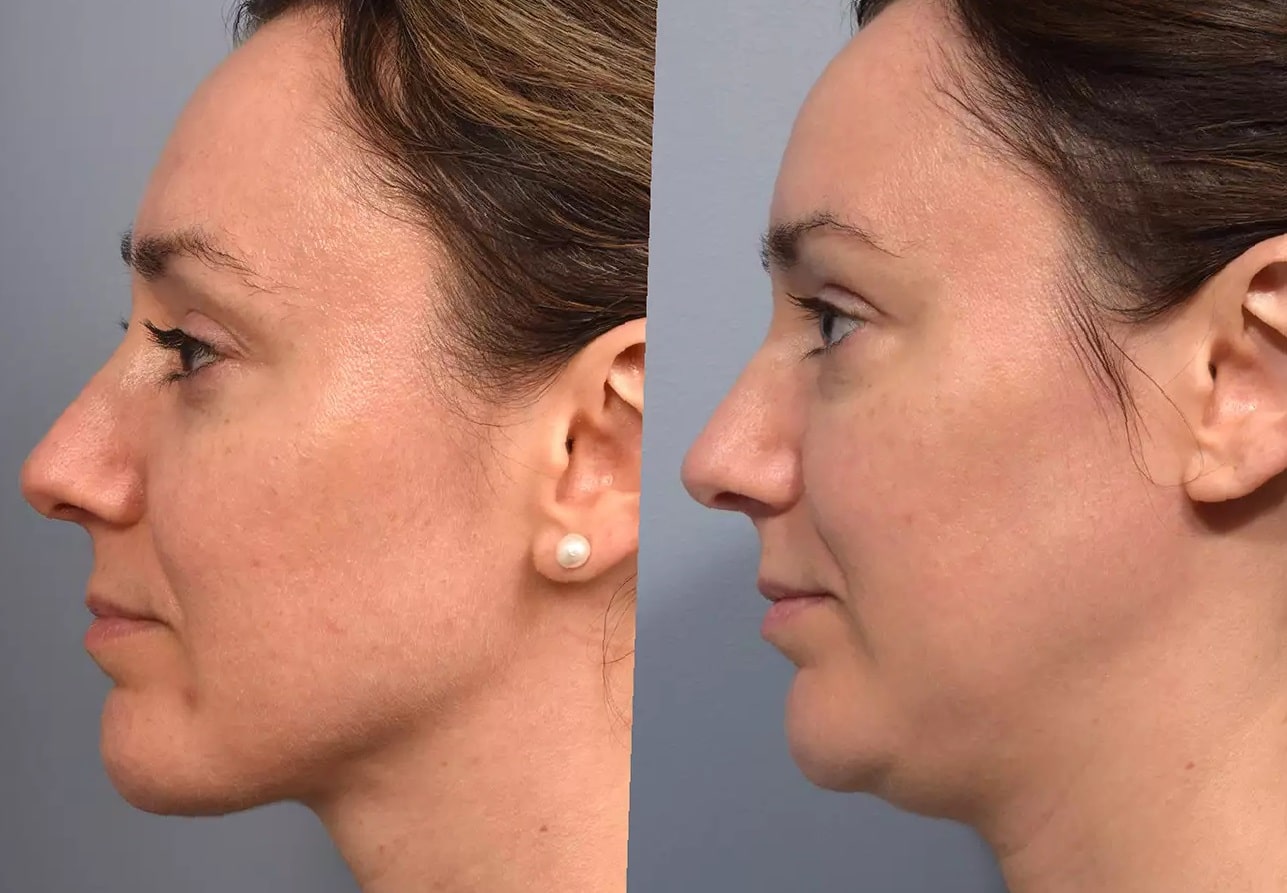
| Benefits of Facetite |
|---|
|
Benefits Of Facetite: A Look At Before And After
Facetite is a revolutionary non-surgical facial rejuvenation procedure that has gained immense popularity in recent years. It is designed to effectively tighten and contour the skin, resulting in a more youthful and rejuvenated appearance. With its remarkable before and after results, Facetite offers numerous benefits to those seeking a non-invasive solution for facial aging concerns.
One of the key benefits of Facetite is the noticeable improvement it brings to sagging skin and jowls. As we age, our skin tends to lose elasticity, leading to drooping and sagging. Facetite targets these specific areas, delivering remarkable skin tightening results. By utilizing radiofrequency energy, the treatment stimulates collagen production, which in turn tightens the skin and improves its smoothness and texture.
In addition to addressing sagging skin, Facetite also enhances facial contours. The procedure can effectively reduce the appearance of fat deposits and contour the face, resulting in a more defined and sculpted look. This is particularly beneficial for individuals who wish to achieve a more chiseled jawline or reduce the appearance of a double chin.
Furthermore, Facetite offers the advantage of minimal downtime compared to traditional surgical procedures. While facelifts and other surgical options require significant recovery periods, Facetite allows patients to resume their daily activities quite quickly. This is a major benefit for individuals who lead busy lives and cannot afford extensive downtime.
- Noticeable improvement in sagging skin and jowls
- Enhanced facial contours and reduction of fat deposits
- Minimal downtime compared to surgical procedures
Overall, Facetite presents a compelling alternative to surgical options, providing remarkable before and after results without the need for extensive recovery. However, it is essential to consult with a qualified professional to assess candidacy and discuss individual goals. By understanding the benefits of Facetite and setting realistic expectations, individuals can make informed decisions about their facial rejuvenation journey.
Facetite Before And After: Realistic Expectations
When considering any cosmetic procedure, it is crucial to have realistic expectations about the outcomes. This is especially true for Facetite, a revolutionary non-surgical skin rejuvenation treatment. Facetite is designed to tighten and contour the skin, reducing the appearance of sagging and wrinkles. Before undergoing Facetite, it is important to understand what to expect in terms of the procedure itself and the results.
During the Facetite procedure, a small handheld device is used to deliver radiofrequency energy to the targeted areas. This energy heats the skin and underlying tissues, stimulating collagen production and promoting skin tightening. The procedure can address various areas of the face, such as the cheeks, jowls, neck, and forehead. It is typically performed under local anesthesia, ensuring minimal discomfort for the patient.
After undergoing Facetite, patients can expect to see immediate results, with further improvement over the following weeks and months. The treatment stimulates the production of new collagen, which gradually enhances the skin’s texture and overall appearance. However, it is important to remember that individual results may vary. Factors such as age, skin condition, and lifestyle habits can all affect how quickly and effectively the skin responds to the treatment.
- Some patients may experience mild swelling, bruising, or redness after the procedure. These side effects are temporary and typically resolve within a few days.
- It is important to follow the post-procedure care instructions provided by your healthcare professional to ensure optimal healing and results.
- While Facetite can produce significant improvements in skin laxity and wrinkles, it is not a substitute for a facelift or other surgical procedures. It can, however, offer a less invasive alternative for those who want to avoid surgery or have mild to moderate skin concerns.
In conclusion, having realistic expectations about Facetite before and after the procedure is essential. While it can provide noticeable improvements in skin tightness and texture, it may not completely eliminate all signs of aging or drastically change facial features. Consulting with a qualified healthcare professional can help determine if Facetite is the right option for you and provide a better understanding of the expected outcomes.
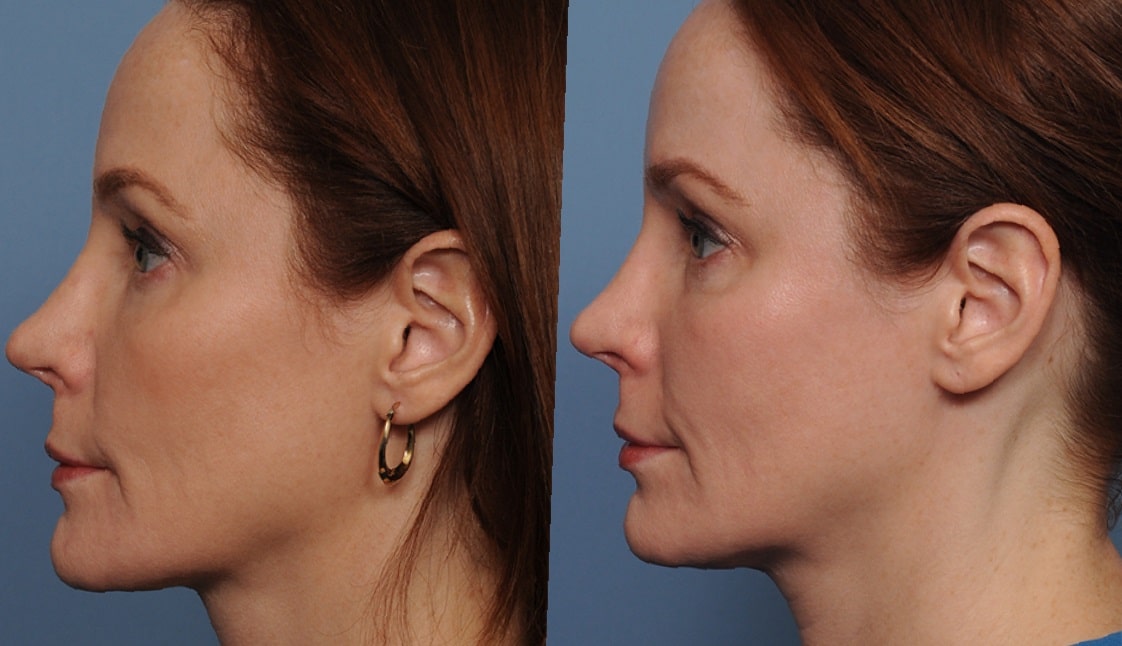
| Facetite Before And After: Realistic Expectations | |
|---|---|
| Procedure: | Non-surgical skin rejuvenation using radiofrequency energy |
| Results: | Immediate tightening with gradual improvement over time |
| Side Effects: | Temporary swelling, bruising, and redness |
| Alternative: | Non-surgical option for mild to moderate skin concerns |
Consultation Process: Evaluating Candidacy And Goals
When considering any cosmetic procedure, it is crucial to start with a consultation process. During the consultation, both the patient and the surgeon have the opportunity to evaluate the patient’s candidacy for the procedure and discuss their goals. Understanding the consultation process is important to ensure that the patient’s expectations are realistic and their goals align with what the procedure can achieve.
The consultation process typically begins with a thorough discussion between the patient and the surgeon. The surgeon will ask the patient about their medical history, previous procedures, and any allergies or sensitivities they may have. It is essential for the patient to be honest and transparent during this discussion to ensure their safety and the success of the procedure.
Next, the surgeon will evaluate the patient’s candidacy for the procedure. This evaluation involves assessing the patient’s overall health, skin quality, and specific concerns that they hope to address through the procedure. Factors such as age, skin elasticity, and existing medical conditions may impact the patient’s eligibility for the procedure.
Furthermore, the surgeon and the patient will discuss their goals for the procedure. This is a crucial step as it helps the surgeon determine whether the patient’s expectations are realistic and achievable through the chosen procedure. The surgeon will provide an honest assessment of what can be achieved and may recommend alternative procedures or complementary treatments if necessary.
The consultation process is an opportunity for the patient to ask questions and express any concerns they may have. It is vital for the patient to feel comfortable and well-informed before proceeding with the procedure. The surgeon will provide detailed information about the surgical technique, potential risks and complications, and the expected recovery process.
| Evaluation Process | Goal Assessment | Discussion and Questions |
|---|---|---|
| The surgeon evaluates the patient’s overall health and skin quality to determine their candidacy for the procedure. | The surgeon and the patient discuss the patient’s goals and assess their expectations. | The patient can ask questions, express concerns, and gather information about the procedure and the recovery process. |
| The patient’s medical history, previous procedures, and any allergies are discussed. | The surgeon provides an honest assessment of what can be achieved through the chosen procedure. | The surgeon addresses any concerns or uncertainties the patient may have. |
In conclusion, the consultation process plays a crucial role in the journey towards undergoing a cosmetic procedure. It allows the surgeon to evaluate the patient’s eligibility for the procedure, establish realistic goals, and address any concerns or questions the patient may have. By ensuring a comprehensive and transparent consultation process, both the patient and the surgeon can work together to achieve the desired results and optimize patient satisfaction.
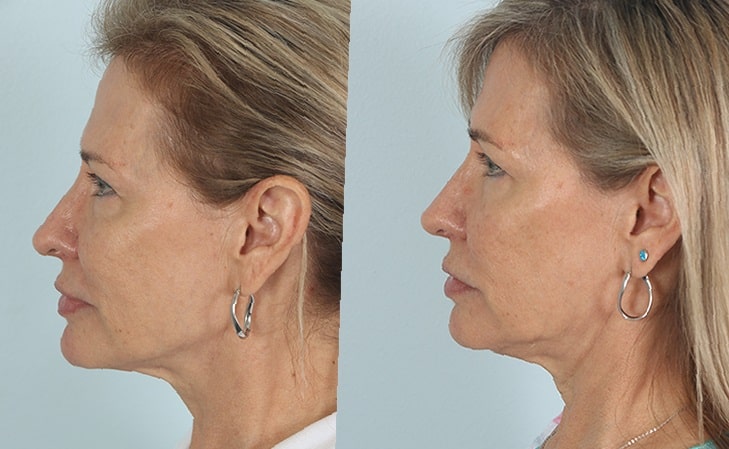
Preparing For Facetite: Pre-Procedure Instructions
Before undergoing a Facetite procedure, it is important to follow certain pre-procedure instructions to ensure optimal results and minimize any potential risks. These instructions are typically provided by your surgeon during the consultation process. One of the key factors in preparing for Facetite is to stop smoking, as smoking can significantly impair the healing process. Smoking can negatively impact blood flow and deprive the tissues of oxygen, which may lead to complications during and after the procedure. Therefore, it is advisable to quit smoking at least four weeks prior to the Facetite procedure.
Another crucial aspect of preparation is disclosing any medications or supplements you are currently taking to your surgeon. Some medications and supplements can interfere with the body’s ability to heal or increase the risk of bleeding during the procedure. Your surgeon will provide specific guidelines on which medications to discontinue and which ones can be continued. It is essential to follow these guidelines to ensure a safe and successful Facetite procedure.
Additionally, your surgeon will provide instructions on eating and drinking before the procedure. In most cases, you will be required to fast for a specific period of time before the Facetite procedure to minimize the risk of complications during anesthesia. It is important to strictly adhere to these instructions to ensure your safety during the procedure. Your surgeon may also recommend avoiding certain foods and beverages that can potentially interfere with the anesthesia or increase the risk of bleeding.
| Instructions for Preparing for Facetite: |
|---|
| 1. Stop smoking at least four weeks before the procedure |
| 2. Disclose all medications and supplements to your surgeon |
| 3. Follow fasting instructions provided by your surgeon |
By following these pre-procedure instructions, you are taking important steps to ensure a smooth and successful Facetite procedure. It is crucial to communicate any concerns or questions you may have with your surgeon during the consultation process to clarify the instructions and address any potential issues. Remember, proper preparation is key to achieving optimal results and minimizing any risks associated with the Facetite procedure.
Anesthesia Options: What To Discuss With Your Surgeon
When considering any surgical procedure, one important aspect to discuss with your surgeon is the anesthesia options. The type of anesthesia used during your surgery can have a significant impact on your overall experience and comfort. It is crucial to have a thorough understanding of the available options and how they might affect you.
One common anesthesia option for facial procedures such as Facetite is local anesthesia with sedation. This involves numbing the treatment area with a local anesthetic, allowing you to remain awake but relaxed during the procedure. Sedation medications are administered through an IV, which induces a state of deep relaxation and reduces any potential discomfort or anxiety. Discuss with your surgeon the dosage and specific medications they will use, as well as any potential side effects or risks associated with sedation.
Another option to consider is general anesthesia. This type of anesthesia ensures you will be completely unconscious during the procedure. It is particularly beneficial for individuals who may experience extreme anxiety or have a medical condition that makes them unable to tolerate conscious sedation. General anesthesia is usually administered through an IV or inhalation, and an anesthesiologist will closely monitor your vital signs and overall well-being throughout the surgery.
In addition to these options, it is important to discuss any allergies or adverse reactions you may have had to anesthesia in the past. Inform your surgeon about any medical conditions you have, especially those related to your heart, lungs, or liver. These factors can influence the choice of anesthesia and help your surgeon determine the safest and most appropriate option for you.
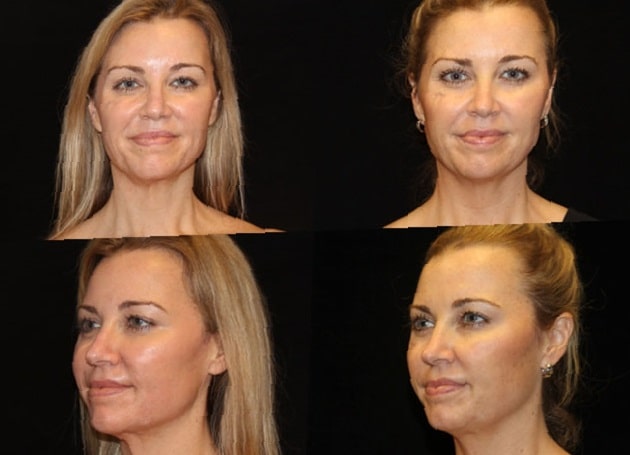
- Local anesthesia with sedation: Numbing the treatment area and inducing deep relaxation
- General anesthesia: Ensuring complete unconsciousness throughout the procedure
| Factors to discuss with your surgeon: |
|---|
| Allergies or adverse reactions to anesthesia |
| Medical conditions, especially those related to heart, lungs, or liver |
The Facetite Procedure: Step-By-Step Overview
The Facetite procedure is a minimally invasive cosmetic treatment that is gaining popularity among individuals looking to achieve a more youthful and rejuvenated appearance. This innovative procedure utilizes radiofrequency energy to tighten and contour the skin, resulting in a smoother and more defined facial contour.
During the Facetite procedure, tiny incisions are made in strategic locations to allow for the insertion of a small probe beneath the skin’s surface. This probe emits radiofrequency energy, which heats the underlying tissues and stimulates collagen production. The controlled heating effect not only tightens the skin but also improves its elasticity, resulting in a more youthful and rejuvenated appearance.
In addition to the radiofrequency energy, the Facetite procedure also incorporates a specialized handpiece that delivers external energy to further enhance the overall results. This handpiece allows for precise contouring and sculpting, ensuring that the treated areas are beautifully reshaped and contoured.
| The Facetite Procedure: | Step-By-Step Overview |
| Step 1: | Consultation and Evaluation |
| Step 2: | Preparation and Anesthesia |
| Step 3: | Incision and Probe Insertion |
| Step 4: | Radiofrequency Energy Delivery |
| Step 5: | External Energy Application |
| Step 6: | Contouring and Sculpting |
| Step 7: | Post-Procedure Care and Recovery |
The Facetite procedure begins with a thorough consultation and evaluation by a qualified and experienced cosmetic surgeon. During this initial step, the surgeon will assess the patient’s facial anatomy, skin condition, and desired goals to determine if Facetite is the right procedure for them.
Once the patient is deemed a suitable candidate, the next step involves preparation and anesthesia. Prior to the procedure, the treatment areas will be thoroughly cleansed, and local anesthesia or sedation will be administered to ensure patient comfort throughout the process.
After the anesthesia has taken effect, tiny incisions are made in inconspicuous locations to allow for the insertion of the Facetite probe. The probe is then carefully guided beneath the skin’s surface, targeting specific areas of concern.
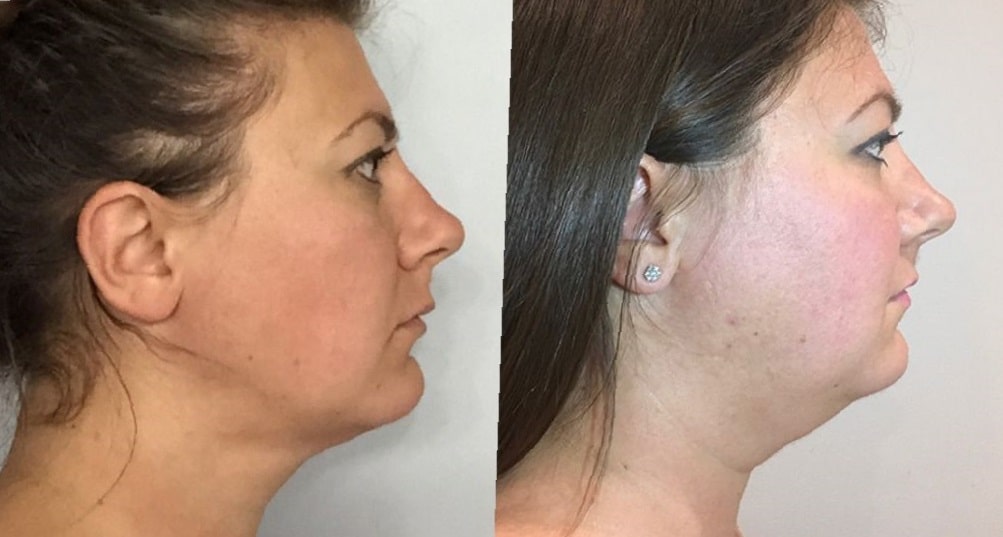
Once the probe is in place, radiofrequency energy is delivered to the underlying tissues, resulting in controlled heating and collagen stimulation. This process tightens the skin and improves its overall tone and texture, giving the patient a more youthful and revitalized appearance.
In addition to radiofrequency energy, the Facetite procedure also incorporates the use of an external energy application. This specialized handpiece further enhances the contouring and sculpting process, allowing for precise and targeted reshaping of the treated areas.
Following the completion of the procedure, patients will be provided with post-procedure care instructions and guidelines for a smooth recovery. It is important to follow these instructions diligently to ensure optimal results and minimize any potential side effects or complications.
In conclusion, the Facetite procedure offers individuals a step-by-step overview of the process, highlighting its effectiveness in achieving a more youthful and rejuvenated appearance. From the initial consultation to the final stages of post-procedure care, this innovative treatment provides patients with a comprehensive approach to facial rejuvenation.
Recovery Period: Timeline And Post-Procedure Care
When undergoing any cosmetic procedure, it is important to understand the recovery period and the post-procedure care that is necessary. This is no different for Facetite – a minimally invasive treatment that can help improve facial contours and reduce sagging skin. To ensure optimal results, patients must follow certain guidelines and pay attention to their body’s needs during the recovery period. By doing so, they can enhance the healing process and enjoy the long-lasting benefits of Facetite.
Following the Facetite procedure, patients can expect a recovery period that typically lasts around one week. During this time, it is normal to experience some swelling, bruising, and mild discomfort in the treated areas. These are all natural parts of the healing process and should subside gradually over time. After the procedure, patients will be provided with specific post-procedure care instructions to follow. It is crucial to adhere to these instructions diligently to ensure a smooth recovery and minimize any potential complications.
First and foremost, it is essential to keep the treated areas clean and free from infection. Patients should gently cleanse the skin as instructed by their surgeon and apply any prescribed ointments or creams. It is also important to avoid excessive touching, rubbing, or scratching of the treated areas, as this can interfere with the healing process. During the recovery period, it is recommended to avoid direct sun exposure and to use sunscreen if going outdoors. Sun protection helps prevent sunburn and minimizes the risk of hyperpigmentation.
Additionally, it is crucial to follow a proper skincare routine during the recovery period to support the healing process and maintain the results of Facetite. This includes using gentle cleansers, moisturizers, and avoiding harsh exfoliants or irritating skincare products in the treated areas. Patients should consult with their surgeon or skincare specialist for personalized recommendations based on their skin type and specific needs.
- Keep the treated areas clean and infection-free
- Avoid excessive touching, rubbing, or scratching
- Protect the skin from direct sun exposure and use sunscreen
In conclusion, the recovery period following a Facetite procedure is an important phase that requires proper care and attention. By following the recommended guidelines and taking care of the treated areas, patients can ensure a smooth healing process and maintain the best possible results. It is crucial to consult with a qualified surgeon to discuss any concerns, obtain personalized post-procedure care instructions, and address any questions that may arise during the recovery period. With patience and adherence to the post-procedure care guidelines, patients can enjoy the long-term benefits of Facetite and achieve their desired facial rejuvenation outcomes.
Facetite Results: Longevity And Potential Side Effects
Facetite is a revolutionary procedure that has gained popularity for its ability to tighten and lift the skin without the need for invasive surgery. Patients who undergo Facetite often wonder about the results they can expect and the potential side effects that may occur. In this blog post, we will delve into the longevity of Facetite results and explore any potential side effects that patients should be aware of.
When it comes to Facetite results, longevity is a common concern among patients. It’s important to understand that the longevity of the results can vary depending on several factors. The patient’s age, skin condition, and lifestyle choices can all impact the longevity of the results. Generally, patients can expect the results of Facetite to last for several years. However, it’s essential to maintain a healthy lifestyle and follow post-procedure care instructions to maximize the longevity of the results.
While Facetite is considered a safe procedure, it’s crucial to be aware of the potential side effects that may occur. Some common side effects include swelling, bruising, and numbness in the treated areas. These side effects typically subside within a few weeks after the procedure. Additionally, patients may experience temporary changes in sensation, such as tingling or tightness. These are normal and should resolve over time.
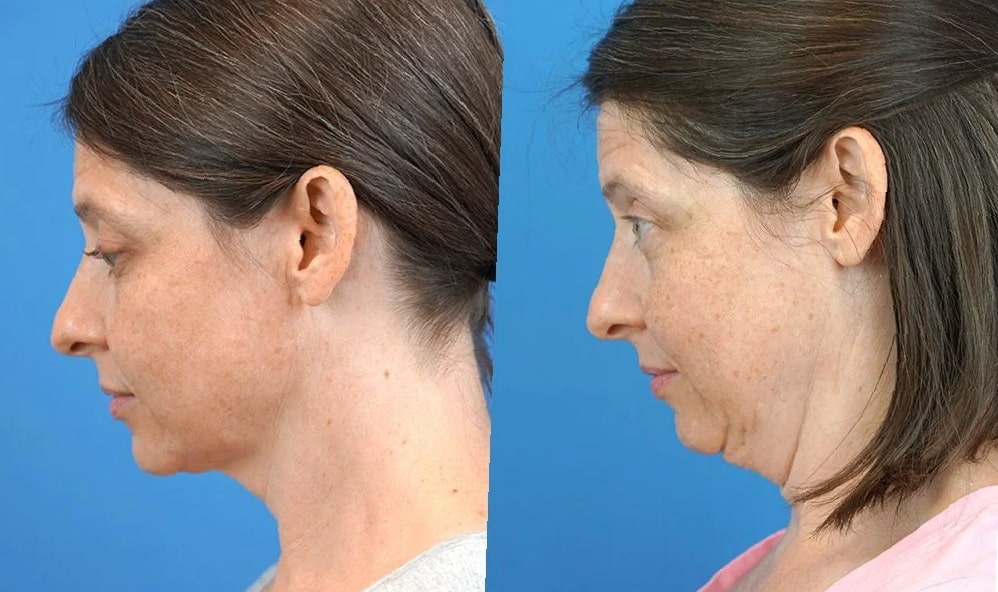
- In rare cases, more severe side effects may occur. These can include infection, skin irregularities, or scarring. It’s important to discuss these potential risks with your surgeon during the consultation process. Your surgeon will evaluate your candidacy and provide you with detailed information about any possible side effects specific to your situation.
| + | – |
|---|---|
| Long-lasting results | Potential side effects |
| Improved skin tightness | Swelling and bruising |
| Enhanced facial contours | Numbness in treated areas |
| Temporary changes in sensation |
In conclusion, Facetite is a procedure that can provide long-lasting results in improving skin tightness and enhancing facial contours. While there may be potential side effects such as swelling, bruising, and temporary changes in sensation, they are usually temporary and resolve over time. By understanding the longevity of Facetite results and being aware of possible side effects, patients can make informed decisions and prepare for a successful outcome.
Maintaining Results: Tips For Prolonging The Benefits
Once you have undergone a Facetite procedure and achieved the desired results, it is natural to want to prolong and maintain those benefits for as long as possible. Luckily, there are several strategies and tips you can follow to ensure that your Facetite results last for an extended period of time.
Firstly, it is important to follow the post-procedure care instructions provided by your surgeon. These instructions typically include avoiding excessive movement or strenuous activities immediately after the procedure, as well as wearing a compression garment to support the treated area. By following these guidelines, you can help reduce the risk of complications and ensure optimal healing.
Secondly, it is crucial to practice good skincare habits to maintain the results of your Facetite procedure. This includes regularly moisturizing the treated area and using sunscreen with a high SPF to protect against harmful UV rays. Additionally, avoiding exposure to excessive heat or cold can help prevent damage to the skin and maintain its elasticity.
Lastly, maintaining a healthy lifestyle can greatly contribute to the longevity of your Facetite results. Incorporating a balanced diet, regular exercise, and staying hydrated can improve overall skin health and prevent premature aging. Additionally, avoiding smoking and limiting alcohol consumption can help minimize skin damage and maintain the benefits of the Facetite procedure.
| Tips for Prolonging the Benefits of Facetite |
|---|
| Follow post-procedure care instructions provided by your surgeon |
| Practice good skincare habits: moisturize and use sunscreen |
| Avoid exposure to excessive heat or cold |
| Maintain a healthy lifestyle: balanced diet, regular exercise, and hydration |
| Avoid smoking and limit alcohol consumption |
By following these tips and incorporating them into your daily routine, you can help ensure that the benefits of your Facetite procedure last for as long as possible. Remember, consistency and dedication to maintaining a healthy lifestyle and skincare routine are key to achieving long-lasting results.
Frequently Asked Questions
1. What is Facetite and how does it work?
Facetite is a minimally invasive cosmetic procedure that uses radiofrequency (RF) energy to tighten and contour the skin on the face. It works by delivering controlled heat to the deeper layers of the skin, stimulating collagen production and resulting in a more youthful appearance.
2. What are the benefits of Facetite? Can I expect noticeable improvements?
Facetite offers several benefits, including improved skin tightness, reduction of wrinkles and fine lines, and enhanced facial contouring. Results are typically noticeable immediately after the procedure, with continued improvement over the following months as collagen production increases. However, individual results may vary.
3. What should I expect during the recovery period after Facetite?
After Facetite, you can expect some swelling, redness, and minor bruising in the treated area. These side effects usually subside within a few days to a week. Your healthcare provider will provide detailed post-procedure care instructions to help minimize discomfort and ensure a smooth recovery.
4. How long do the results of Facetite last? Are there any potential side effects?
The longevity of Facetite results varies depending on factors such as age, skin condition, and lifestyle. On average, patients can expect results to last for several years. However, the natural aging process will continue, so maintenance treatments may be necessary to sustain the effects. Potential side effects include temporary numbness, swelling, and mild discomfort, but these are generally mild and subside over time.
5. What steps can I take to maintain the results of Facetite for as long as possible?
To prolong the benefits of Facetite, it is important to adopt a healthy skincare routine and protect your skin from sun exposure by using sunscreen. Additionally, maintaining a balanced diet, avoiding smoking, and managing stress levels can also contribute to long-lasting results.
6. How can I determine if I am a suitable candidate for Facetite?
During a consultation with a qualified healthcare provider, your candidacy for Facetite will be evaluated based on factors such as your overall health, skin condition, and desired goals. It is important to discuss any medical conditions, medications, or allergies you may have to ensure the procedure is safe and appropriate for you.
7. What anesthesia options are available for Facetite? What should I discuss with my surgeon?
Facetite can be performed using local anesthesia with or without sedation, depending on the preferences of the patient and surgeon. During your consultation, it is important to discuss your comfort level, previous experiences with anesthesia, and any concerns or questions you may have regarding the anesthesia options.
